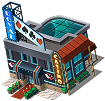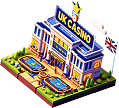How to Create Your Own Table Game: A Step-by-Step Guide
Creating your own table game is a rewarding endeavor that combines creativity, strategy, and design. Whether you're looking to design a game for friends, family, or even to bring to market, this comprehensive guide will walk you through each step of the process.
From brainstorming unique concepts to finalizing game mechanics, we'll cover everything you need to know to develop a table game that captivates players and stands out in the crowded gaming market.
Let's embark on this creative journey and turn your game idea into reality!
1. Brainstorming Your Game Concept
The first step in creating your own table game is to brainstorm a unique and engaging concept. Consider what type of game you want to create: Is it a strategy game, a party game, or perhaps a role-playing game?
Think about the theme and setting. Do you want your game to be set in a fantasy world, a historical period, or a modern-day environment? The theme will greatly influence the game's aesthetics and mechanics.
Additionally, consider what makes your game idea stand out. Identify what unique elements you can introduce that haven't been explored in existing games.
Choosing the Right Theme
Your game's theme sets the tone and atmosphere. A well-chosen theme can enhance the player's experience and make the game more immersive.
For example, a mystery theme might involve solving puzzles and uncovering secrets, while a sci-fi theme could incorporate futuristic technology and exploration.
Ensure that the theme aligns with your target audience's interests and preferences.
2. Defining Game Mechanics
Game mechanics are the rules and systems that govern how players interact with the game. Defining clear and engaging mechanics is crucial for creating a balanced and enjoyable game.
Start by outlining the core mechanics. Will your game involve resource management, tile placement, card drafting, or player elimination?
Consider how these mechanics will work together to create a cohesive gameplay experience.
Balancing Complexity and Accessibility
It's essential to strike a balance between complexity and accessibility. While complex mechanics can add depth, they shouldn't overwhelm new players.
Consider implementing a gradual learning curve, where new mechanics are introduced as the game progresses.
This approach helps players feel comfortable and engaged without feeling intimidated.
3. Designing the Game Components
Designing the physical components of your table game is a critical step that brings your concept to life. Components can include the game board, cards, dice, tokens, and any other items players interact with.
Ensure that each component serves a purpose and enhances the gameplay experience.
Focus on clarity and functionality in your designs to prevent confusion during gameplay.
Creating Visual Assets
The visual design of your game components should be appealing and consistent with your game's theme.
Consider collaborating with illustrators or graphic designers to create high-quality visuals that attract players.
Remember that good design not only looks attractive but also improves the usability of game components.
4. Prototyping and Playtesting
Prototyping is the process of creating a preliminary version of your game to test its functionality and enjoyment.
Use simple materials like paper, cardboard, and markers to create your prototype. This allows you to iterate quickly without significant investment.
Once your prototype is ready, conduct playtesting sessions with friends, family, or target audience members.
Gathering Feedback
During playtesting, observe how players interact with your game. Take note of any confusion, frustration, or suggestions for improvement.
Encourage honest feedback and be open to making changes based on player experiences.
Iterate on your design, refining mechanics and components to enhance the overall gameplay.
5. Finalizing Game Design
After several rounds of playtesting and iteration, finalize your game design by addressing any outstanding issues and polishing the game components.
Ensure that all rules are clearly written and that the game flows smoothly from start to finish.
Consider creating a rulebook or guide that is easy to understand and accessible to new players.
6. Manufacturing and Production
If you plan to produce your game for distribution, research manufacturing options that suit your budget and quality requirements.
Obtain quotes from different manufacturers and evaluate their capabilities.
Ensure that your game components are durable and of high quality to provide the best experience for players.
7. Marketing and Launch
Develop a marketing strategy to promote your game to your target audience. Utilize social media, gaming forums, and conventions to create buzz around your game.
Consider collaborating with influencers or reviewers to gain exposure.
Plan a launch event or campaign to generate excitement and drive sales.
Conclusion
Creating your own table game is a multifaceted process that involves creativity, design, and strategic planning. By following this step-by-step guide, you can develop a game that is not only enjoyable to play but also stands out in the competitive gaming market.
Remember to stay flexible, embrace feedback, and continually refine your design to achieve the best possible outcome.
Start your game development journey today and bring your unique vision to life!
Ready to create your own table game? Contact us today to get started!





